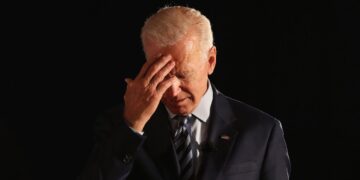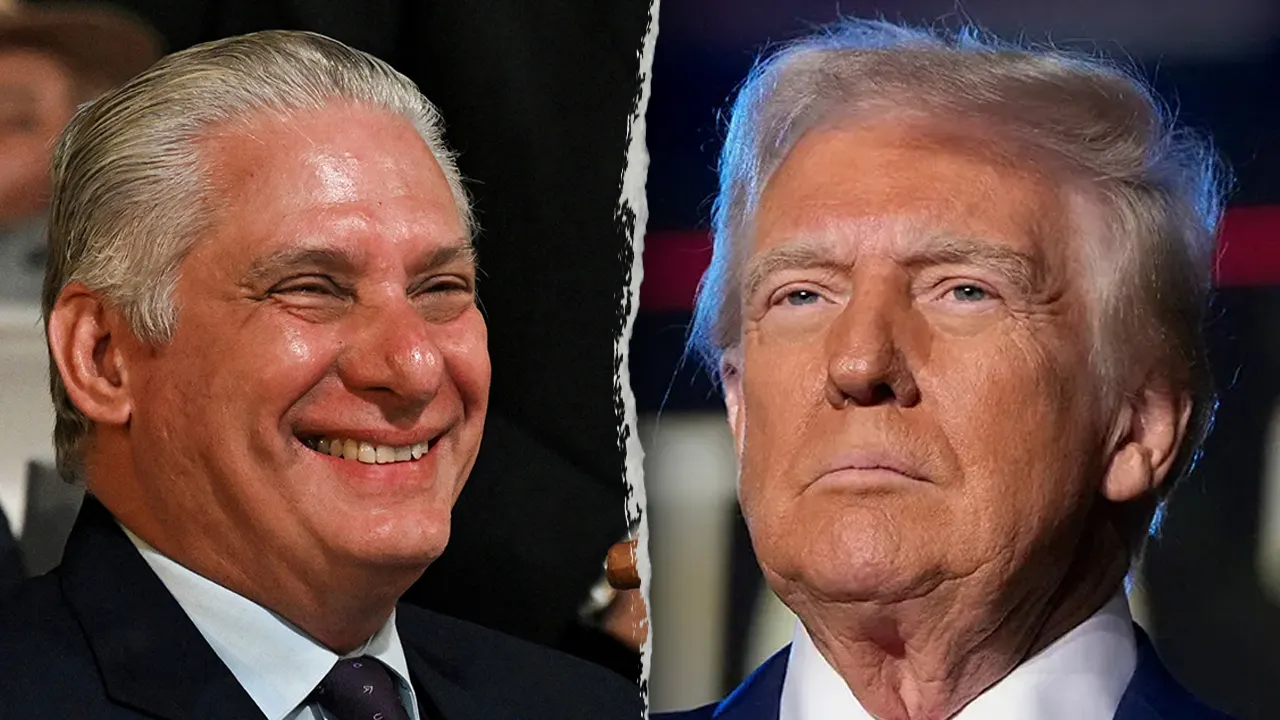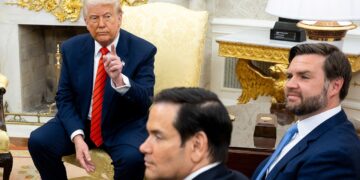The Chinese efforts to assert itself as a global geopolitical player and a neutral powerbroker in the war in Ukraine also continued. Welcome to another update on the Russian invasion of Ukraine, as we are about to enter a potentially decisive phase of the war.
The latest news out of Russia is their potential annexation of Belarus. If it becomes reality, It will have dire effects around the world, and on every one of us. After all, the invasion of Ukraine sent prices for essentials like fuel and food soaring,
And caused people to lose nearly 7 trillion dollars of personal wealth. Even classic investments like stocks and bonds lost anywhere from 15 – 25% last year. Now, McKinsey reports the biggest institutions are putting 30-50% of their assets into alternative assets. Alternatives like fine art, which major banks already offer advisory services for.
But thousands of you have already been investing in art, from legends like Picasso and Banksy, for the last year – thanks to Masterworks. With Masterworks, you’re investing in real, physical paintings, qualified with the SEC – And all filings are linked in the description.
As we said; thousands of you are a part of their 650,000-plus users,Which means thousands of you might have enjoyed Masterworks’ incredible results last year: Over $25.8 million handed back to investors from 11 paintings sold, with each sale returning over 9% net.
Masterworks’ new offerings have sold out in less than an hour, But following the link below means your account will be pre-loaded with special access. The Donbas front continued to be the primary focus of the Russian grand offensive, as the attempts of
The Russian army to gain meaningful success in the Vuhledar section of the Zaporizhia front and along the North Luhansk front failed. The only reported notable gain of the Russian army in these battlefield sections was achieved by the 4th LPR Motorized Brigade, which advanced closer to
Spirne. On the Zaporizhia front, the Ukrainian army conducted several more reconnaissance attacks towards Polohy, and according to Russian sources, they gained some ground in that section. Given the increased intensity of combat around Polohy, one may think that the Ukrainian command
Has identified this section as an area which may be penetrated in the upcoming counter-offensive, or it simply may be a feint to draw more Russian units into the area and strike elsewhere. We shall see. But back to Donbas, where most of the combat
Occurred in this period. Even though the Wagner group and the 106th Guards Air Assault Division failed to make a decisive breakthrough to solve the Bakhmut gauntlet for good, they continued making progress in and around the city. On March 16, they pushed back the 30th
Mechanized Brigade to capture Zaliznianske, along with getting closer to Khromove. By March 18, Wagner mercenaries reached the center of Bakhmut from the South, along with pushing the 67th Mechanized Brigade to gain further ground toward Bohdanivka in the following days. On March 22, Wagner further advanced from the South, capturing the Mariupolske Cemetery.
On March 23, Wagner groups pushed closer towards Ivanivske in the South of the city, along with crossing the Bakhmutovka river and creating a bridgehead to threaten the city center. Since then, the Ukrainian army has managed to stabilize the situation in the Bakhmut section,
As the intensity of Russian attacks has somewhat decreased. The Ukrainian commander in chief Zaluzhny has stated that the Ukrainian army has stabilized the situation in Bakhmut thanks to their “titanic work.” Ukrainian army officials have claimed that the Russian army has been reinforcing Wagner with regular army units to complete the capture of Bakhmut.
The situation is becoming increasingly complicated for both sides. Ukraine has continued to lose ground in Bakhmut and around the M03 highway leading to Sloviansk. The only supply line controlled by the Ukrainian army is the T0504, which is targeted by Russian artillery.
Wagner had already crossed the river, which was the final natural barrier within the city lines, to advance to the center of Bakhmut. Many military commentators believe that since Bakhmut is not on any natural elevation, it is more logical to withdraw toward the Northwest, which has a high
Ground advantageous for the defensive side. They argue that the ratio of losses is not as advantageous to the Ukrainian army as it could be in a more favourable area. But others claim that the Ukrainian army has largely absorbed the main brunt of the Russian offensive potential in
Bakhmut and has significantly diminished it in battles that have been very intensive in the past 3-4 months. British Intelligence claims that almost 20% of all Russian losses since the summer of 2022 have been suffered in the Bakhmut section. A Ukrainian serviceman has told the New
York Times that their goal since the beginning of the year has been to hold Bakhmut until April, while the commander of the Ukrainian land forces, General Syrsky, claimed that Russians have almost exhausted their offensive potential and that the Ukrainian army will soon capitalize on this.
Some analysts argue that Ukraine may actually start its counter-offensive, which is set to be launched in April-May, according to the Ukrainian defence minister Reznikov, in Bakhmut, where Russians may have exposed their flanks. The chief of Wagner, Prigozhin, also warned about
Bakhmut as a potential section of the Ukrainian counter-offensive. At this point, all of that is assumptions and speculation, and we will see if the Russian army manages to capture Bakhmut before the Ukrainians launch their counter-offensive in the upcoming couple of months.
Ukrainian president Zelensky has also chimed in about the potential political consequences of the fall of Bakhmut. He said that the loss of Bakhmut would allow Putin to sell this as a victory to the Russian public, along with the Ukrainian and the international community, who may push him to
Concede unacceptable terms dictated by Putin. It is evident that the Ukrainian political leadership wants to avoid any political defeats, which can turn the mood of the international community against supporting Ukraine and decrease the motivation of the Ukrainian public to fight on.
In the previous video, we noted the increased intensity of fighting in the Avdiivka section of the Donbas front. In the second half of March, the Russian army was so active there that some military analysts argued that Russia had actually switched its primary focus from
Bakhmut to Avdiivka. They have been trying to capture this heavily fortified town just outside Donetsk since 2014 and then since the start of the full-scale war and are giving it another try now. The advantage of the Ukrainians is that they have formidable defensive structures in this area,
While Russians can capitalize on the fact that the Avdiivka section is mostly flat, has limited treeline and only a single supply line leading to the town. They have been trying to capture this road in this period and have moved from the North and the South to put the Ukrainian 53rd Mechanized
Brigade and the 70th Separate Infantry Battalion under an operational encirclement. By March 16, the evidence of the capture of Krasnohorivka in the North of Avdiivka by the DPR units, the units consisting of the Russian mobilized soldiers had emerged. They continued their offensive with an
Assault towards Stepove in the North and Sieverne in the South, gaining some ground by March 20. The Ukrainian command later stated that several Wagner units consisting not of inmates but of professional operatives had been deployed to Avdiivka, which may indicate the
Significance of this section for the Russian army. While Bakhmut and Avdiivka remained the main focus of the Russian army in Donbas, they also made minor progress inside Mariinka. Even though Russia is making gains in Donbas, obviously, aspirations of their currently
Ongoing offensive were much bigger. We can safely assume this based on their so far failed offensive operations in the Vuhledar section and along the North Luhansk front. And the worst news for Russia is that they are expending their remaining offensive potential, which the Russian industry is
In no position to compensate for immediately. In this period, Russia started removing Stalin-era T-54/55 tanks from storage and deploying them to Ukraine. Russia has vast reserves of these tanks; some will be modernized before being sent to Ukraine. But their effectiveness in modern
Warfare is going to be very low. According to the Economist, Russia’s only tank production factory, UralVagonZavod, produces only 20 tanks per month. Russia loses many more tanks than 20 per month, thus, they would have to go deeper into their old tank reserves to compensate.
Russia is losing a lot of manpower in Ukraine and reportedly seeking to send more than 400k soldiers to the battlefield. According to Bloomberg, Putin is reluctant to declare the second wave of mobilization before the upcoming presidential election in 2024.
Therefore, the Kremlin may look for alternative ways to recruit more men for Ukraine by creating volunteer battalions, encouraging people to sign military contracts and creating new mercenary organizations like the Konvoy group created by the Russian-appointed governor of Crimea, Aksyonov.
Still, it is very unlikely that Russia will manage to recruit another 400k men to fight in Ukraine without ordering another mobilization. The morale of the Russian leadership, military command and people is not improving either. The dismissal of the commander responsible for the disastrous Vuhledar offensive, General Rustam Muradov, the continued power struggle between
Prigozhin and the Russian MoD, Putin’s unannounced trip to Crimea and Mariupol, and his decision to deploy nuclear weapons to Belarus have done nothing to boost morale. The latter of this is particularly notable from the perspective of the much anticipated visit of the Chinese leader Xi Jinping to Russia on March 20 and 21.
A day before that, both Putin and Xi published their articles on the vision of Sino-Russian relations, in which both leaders praised the friendship between the countries, increased economic ties and called for a multi-polar world order. The difference is that Putin was much more
Anti-Western in his article, blaming the West and NATO for the war in Ukraine, while Xi focused on the Chinese peace plan in a bid to strengthen China’s position as a mediator in this war. During their meeting in Moscow, Putin and Xi lavished praise on each other, reiterating their interest
In the comprehensive deepening of relations between countries, while the Russian president also stated that he is acquainted with the Chinese peace plan and “is always open to negotiations.” In their joint statement, countries also stated that “all nuclear weapons states should refrain
From deploying nuclear weapons abroad.” But a few days later, Putin announced his intention to station Russian nuclear weapons in Belarus. This is clearly at odds with Chinese wishes for nuclear de-escalation. Evidently, Putin did not get what he wanted from Xi’s visit to Moscow, therefore, he was comfortable with reneging
On the joint statement. Putin wanted pledges of military support from China but did not get any. Therefore, the results of Xi’s visit fell way short of the Kremlin’s expectations. A few days before this visit, Western media outlets reported about small-scale military
Supplies sold by Chinese companies to Russia. This included rifles, body armor, and drone parts sold to Russia between June and December 2022. While this is the first claim of Chinese military equipment being sent to Russia, their scale is very small and was done not by the Chinese
Government but by Chinese companies. Chinese military production companies would not sell their produce to Russia without the government’s permission, but they have probably made sure that the trail does not lead to the Chinese government to protect it from sanctions. Also, the scale of
Supplies and their types are curious. Russia does not have documented problems with rifles, and one may wonder why the sides would be interested in such a transaction. There have been no other reports of Chinese military support to Russia. But according to British intelligence, Russia and
Iran have agreed on the regular supply of Shahed drones in small numbers. Russia is interested in this to continue attacking Ukrainian cities and launched Shahed drones on March 16, 22 and 28. It is interesting that according to Ukrainian military intelligence, Russia may be focusing
On attacking Ukrainian military infrastructure instead of energy infrastructure, since pursuing the latter effectively requires very frequent strikes. Russia has not been able to keep up with its pace of strikes of late 2022, probably due to diminishing reserves of its cruise missiles. What about the Ukrainian army? We already mentioned Reznikov’s statement about the
Ukrainian counter-offensive starting in April-May 2022, depending on the weather. Politico has also claimed that Ukraine’s counter-offensive will be launched in May, pointing out two potential axes of advance for the Ukrainian army. One is the march on the Azov Sea to cut Crimea off from the rest of the Russian-controlled territory,
While the other is from Kherson across the river Dnipro to Crimea. While the first option is the most commonly anticipated one, the second is tricky due to challenges caused by needing to cross Dnipro and establish a bridgehead on its left bank. But it is a high-risk – high-reward
Scenario; if Ukraine manages to do that, it will have a shorter route to Crimea. One Russian military blogger certainly thinks this will be the case. According to him, regular battles have occurred on small islands in Dnipro. The West has been sending a large number of military
Speed boats to Ukraine, while the Ukrainian army units have been urging volunteers in Ukraine to supply them with life jackets. He believes these are all indicators of the preparation for a large offensive from Kherson on Crimea, which Russia is preparing by building fortifications along Dnipro.
Wagner boss Prigozhin argues that Ukrainians are preparing to attack in five different axes: into the Belgorod oblast of Russia, in the Kreminna section, in the Bakhmut section, towards Donetsk and in the Zaporizhia oblast. It does not seem likely that Ukraine has enough
Resources to launch 5 full-scale separate assaults, but they can certainly attempt several probing attacks and capitalize on the most successful ones to develop them. Prigozhin particularly focuses on Bakhmut, as he argues that Ukraine has 80k troops in the Bakhmut, Sloviansk area, preparing for an imminent counter-offensive there. This may be true, or
Maybe Prigozhin’s attempt to leverage the Russian MoD to supply more artillery shells to Wagner. It is necessary to mention that not everyone is making immediate promises of a successful counter-offensive by Ukraine. For instance, in his interview with the Japanese press, Zelensky
Stated that the Ukrainian army cannot start the counter-offensive now due to a lack of weapons. This may have been done to push the Western allies to expedite the delivery of certain weapons and armoured vehicles to Ukraine. On March 30, the Ukrainian foreign minister Kuleba
Urged everyone to curb their enthusiasm with regard to the counter-offensive and stop viewing it as a decisive battle. He warned that if Ukraine fails to launch a successful counter-offensive, the positions of western officials in favour of a compromise with Russia will become stronger.
His message is of patience and cautioning against putting all proverbial eggs in the same basket for the upcoming counter-offensive. Still, Ukraine’s allies continued bolstering its offensive and defensive capabilities with its military assistance. On March 16, Axios reported that Israel agreed to sell anti-drone systems to Ukraine,
Which are supposedly effective against Shahed drones. On the same day, Ukraine started receiving some Soviet-made jets from its allies. Poland delivered 4 MiG-29 fighter jets, while Slovakia approved transferring 13 of them to Ukraine. This was followed by Su-25 jets from North Macedonia, who also reportedly decided to deliver 12 Mi-24 helicopters. There
Has not been much rumbling about western-made jets to be delivered to Ukraine, apart from a rumour that France intends to purchase 40 Mirage 2000-9 4th generation fighter jets for Ukraine. If the West is really planning to deliver modern fighter jets to Ukraine, it has to think faster.
It is being reported that Russia has been using its Su-35 fighter jets more often in Ukraine, which is making a difference. Ukraine cannot afford to concede air superiority to Russia on the eve of its offensive. In this period, some of the earlier pledged western tanks and armored vehicles
Continued arriving in Ukraine. First AMX 10-RC French infantry fighting vehicles, 30 Oncilla Armored Personnel Carriers, 18 Leopard-2 tanks and almost 40 Marder infantry fighting vehicles pledged by Germany and Challenger 2 tanks pledged by Britain have already arrived in Ukraine.
The EU has also promised Ukraine 1 million 155-mm shells within the next 12 months, HIMARS munition, HARM missiles, anti-tank weapons and the aforementioned military speed boats in the latest military assistance package worth 350 million dollars by the USA, along with Leopard 2 tanks, Archer self-propelled artillery systems, Robotsystem 97 missile
Systems by Sweden as a part of the 600 million dollar-wortth military aid package. It has also been reported that the Ukrainian military manufacturing corporation Ukroboronprom has started producing shells with an unspecified NATO member state, while Slovakia and Germany have agreed to conduct maintenance of Ukrainian PzH2000 howitzers on the territory of Slovakia.
The notable development is that according to Der Spiegel, the German government intends to increase military assistance to Ukraine from 3 billion euros to massive 15 billion euros. One of the notable developments regarding international support of Ukraine in this
Period was the decision of the Pentagon to send the older version of Abrams – M1A1 to Ukraine. This is reportedly done to speed up the delivery of these tanks, as Abrams M1A1 can be delivered in 8-9 months, while initially pledged M1A2s may take a couple of years to arrive in Ukraine.
It is necessary to note that the pledged M1A1 are the modernized versions. In the second half of March, Ukraine also received 1.5 billion euros of financial aid from the EU, while the IMF agreed on 15.6 billion USD loan package for Ukraine, which it would not have to start repaying until 2027.
Lastly, we should briefly talk about the statement from Britain about the provision of munition with depleted uranium, which has a higher penetration power of armor, to Ukraine. Depleted uranium is way different from enriched uranium, which is used for the production of nuclear weapons,
Has way lower radioactiveness, and is suitable for conventional military use, but Russia used this opportunity to create a narrative that the West is providing dirty bombs to Ukraine and announced its aforementioned decision to station nuclear weapons in Belarus in retaliation.
Before touching upon the biggest development on the diplomatic front in this period, let’s briefly note that the Grain Deal was extended on March 18 despite Russian claims that their demands had not been made met. Still, Russia is not looking for a diplomatic solution to the war. The Russian MFA
Spokesperson Maria Zakharova reiterated the maximalist position set at the beginning of the war, which demands “demilitarization and denazification of Ukraine” and international recognition “of new territorial realities.” At least, on the level of official statements, Russia does not seem flexible to engage in any talks, as Putin arguably believes that his army
Can still overpower Ukraine on the battlefield. But the biggest recent news on the international level came on March 17, when the International Criminal Court issued an arrest warrant for Putin for alleged war crimes related to the forceful deportation of Ukrainian children to Russia.
All countries that have ratified the Rome Statute of the ICC are obliged to arrest Putin if he steps on their soil. While this does not have an immediate tangible impact, since Putin is already quite isolated diplomatically, it puts him on the same list as the likes of Gaddafi and Al-Bashir.
Putin’s spokesman Peskov called this decision “outrageous and unacceptable” but also played down its significance. But former Russian president Medvedev was way more bellicose and went on his usual nuclear spiel threatening the ICC with a missile strike. The economies of the warring states continue suffering as the war drags on.
According to Bloomberg, Russia is spending an unsustainable third of its state budget on the war, while its energy share in the EU market continues plummeting. Currently, the Russian share of oil exports on the EU market dropped from 31% to 4%.
But Ukraine is not doing any better, either. According to the minister of finance, Marchenko, Ukraine is spending 130 billion hryvnias monthly on the war, while the budget revenues are only 80 billion monthly. This is not sustainable either, and Ukraine relies on Western financial aid to
Continue supporting its war effort. According to The Guardian’s source in Russia, during a party in December 2022, Peskov told the guests that the war would last a long time. At least this is the intention of Putin, as he does not seem to really care about losses suffered during the war.
According to the BBC, the total number of Russian losses in this war may have exceeded 211500 people. There have been no recent claims of Ukrainian losses. According to the Oryx blog, the visually confirmed equipment losses for Russia as of March 31st are 1906 tanks, 3925 vehicles,
236 command posts and communication stations, 659 artillery systems and vehicles, 190 multiple rocket launchers, 78 aircraft, 80 helicopters, and 207 drones. For Ukraine, these are 489 tanks, 1411 vehicles, 9 command posts and communication stations, 274 artillery systems and vehicles, 40 multiple rocket launchers, 62 aircraft, 30 helicopters, and 93 drones.
Over the month of March, Russia increased, the area of land they control in Ukraine by approximately 70km². This equates to a total of ~16.68% of Ukraine being occupied by forces, a 0.01% increase since the end of February. We are working on more videos on the topic,
So make sure you are subscribed and have pressed the bell button to see them. Please, consider liking, subscribing, commenting, and sharing – it helps immensely. Recently we have started releasing weekly patron and youtube member exclusive content, consider joining their
Ranks via the link in the description or button under the video to watch these weekly videos, learn about our schedule, get early access to our videos, access our private discord, and much more. This is the Kings and Generals channel, and we will catch you on the next one.
































 Reaction & Commentary
Reaction & Commentary











